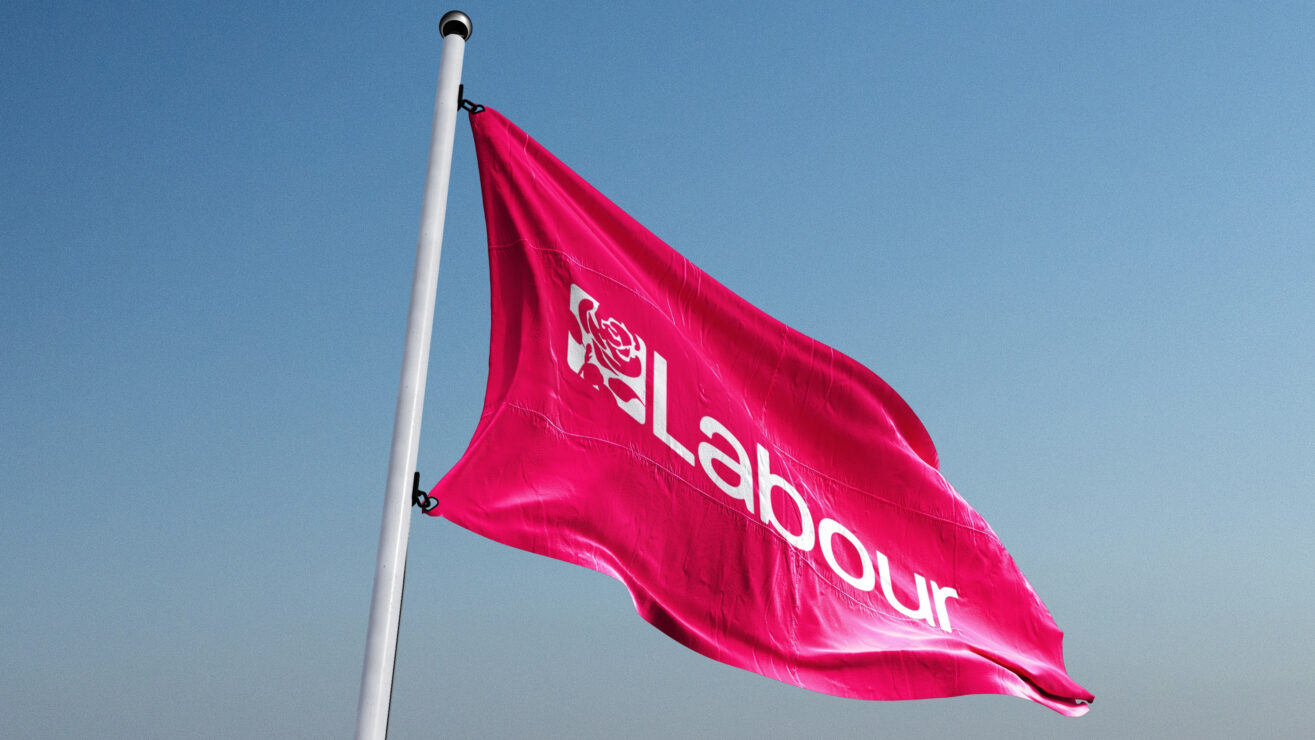Most of what we read about higher education funding in Scotland refers to tuition fees, or more precisely the absence of them. It’s great politics, but the jury is out as to how good the policy is. So, how has Jayne-Anne Gadhia’s independent review of student support fared in redressing the balance?
The report’s eye-catching headline recommendation is that students in both HE and FE should receive a the same total allowance of £8,100 a year for maintenance – a figure based on a calculation (38 weeks, 25 hours a week of study) linked to the Scottish National Living Wage of £8.45 per hour. Students’ income can be augmented by a maximum of 10 hours’ worth of work – in line with recommendations made in the Cubie Review – to make up the remainder of the 35-hour working week.
And this is deemed to be the amount of support – via loans, bursaries, benefits and other payments – that every student should be entitled to. The mixture of loans and grants will vary depending on a means test, an approach familiar in Scottish HE but new to an FE system used to a higher bursary and discretionary funding handled at college level.
The split
Much of the detail concerns the precise split between bursaries and loans that each student could expect. Currently in Scotland each undergraduate can expect a bursary of up to £1,875 (depending on the income of their parents), and in FE the maximum amount is £3,915. Option one maintains these amounts, topping the remainder up with student maintenance loans to get to the £8,100 targets. This is revenue neutral as regards direct cost, but would notionally cost a further £252m in loans.
But the recommendation of the review is for option two: a possible 50:50 split between bursaries and loans for FE students, with the amounts for HE staying as currently. This would increase the direct cost (of bursaries) to the Scottish government by £16m each year and the notional further loan cost would fall to £231m.
Option three, raising the HE bursaries to allow the potential of a 50:50 split, would have a direct cost of £123m a year.
Student friendly?
As you would expect, the report is keen to trumpet the lowest annual borrowing and lowest interest rate for student loans in the UK. The proposal claims to solve the issue of students from low income background graduating with the highest debt – but as students of means are not required to take up loans this is perhaps debatable.
More notably, students with outstanding FE loans would see these written off when and if they enter HE. This is aimed at increasing the number of young people taking a longer “learner journey”. There are implications here for widening participation, as those without suitable compulsory qualifications for direct HE entry are subsidised to gain these via the FE system.
Students would be offered flexibility on the way their loans and bursaries are paid – be this termly, monthly, front-loaded or split into equal instalments. And because the minimum income guarantee is clear, students are able to see their maintenance funding as a total, rather than juggling numerous amounts from numerous sources.
There’s good news after graduation too: the repayment interest rate should – it is recommended – be held at whichever is lowest between RPI or 1% above the Bank of England base rate; loans still outstanding after 30 years could be written off (down from 35 years); and we could see an increase of the repayment threshold from £17,775 to £22,000 per year – the median salary of graduates working in Scotland.
The holes
Scottish politicians are often quick to compare the funding their HE system to that of England. “Free tuition” is a totemic political position, and although students living away from home have access to slightly more per year as a maintenance loan in England, the existence of the bursary and more generous repayment terms would put the system ahead if these recommendations are accepted.
However, the issue of maintenance for part-time students has been largely ignored in both countries. The Scottish report parks the issue for further analysis by the government – meaning that we should watch the detailed response very carefully. We also note that nursing and midwifery, postgraduate and industry or institutional support have been marked out of bounds at the remit stage – likewise the thorny issue of tuition fees themselves has been roped off.
Unlike in England, some students in Scotland are eligible to claim benefits while studying – there are also a range of other payments which some students may be eligible for. While the report elegantly counts these towards the £8,100 minimum, there’s little written about the additionality of such payments. Students with – for example – a disability still have the general food and accommodation cost that other students have, but will incur additional costs for specialised equipment and support.
The £8,100 minimum is generous (in that it will cover accommodation costs in most cases, leaving plenty to spare for books, travel and food) – but it is accessed largely (at HE level) through loans. This is a significant increase in the debt that many students will hold on graduation – it is low compared to other parts of the UK, and the repayment terms are better, but it is still a burden which may not have been there before. And it is likely to fall disproportionately on students from poorer backgrounds – those with well off parents can choose not to take out loans, others do not have this option.
Numerous features of the system, in particular the very low interest rate, make this proposed system attractive to well-off students who may choose to borrow to invest, pocketing the profits and making a repayment of the full amount immediately on graduation.
The response
Both Universities Scotland and the Scottish Funding Council (SFC) have offered a cautious welcome to the report. John Kemp at the SFC told us “Today’s report is the result of a comprehensive study of student support for both further and higher education. We look forward to working with the Scottish Government, colleges and other partners to take forward its findings.”
A Universities Scotland spokesperson told us: “We welcome the findings of the Student Support Review. From our perspective we see the overall improved package of student support for both university and college students a positive step”.
NUS Scotland offered another cautious welcome, but called for further bursaries for the poorest students.
The sheer policy detail and depth that makes the Diamond Review in Wales – a favourite of policy wonks – is missing here. The appendices concern a survey rather than economic modelling and the emphasis is firmly on presentation. The panel has sketched an outline of a way forward but it will be left to the government to contribute the detail, meaning that the clarity aimed for may still be some way off.















This could lead to the Plan 1 (pre-2012) threshold being forced up.
Scotland currently uses the SLC repayment plan 1 (which is applicable to English pre-2012 loans). The review recommends the interest rate stays the same (lower of base rate +1% or RPI), loans written off after 30 years (rather than 35 years) and the repayment threshold increase from £17,775 to £22,000.
If the Scottish Government accept these conditions, they are unlikely to only apply them to new loans as there’s no reason not to apply them to existing loans (the threshold and write off are being made more generous and the interest rate is staying the same so surely it would be unfair to leave existing graduates paying more for longer). Applying them to new loans would also need a new repayment plan to be operated by SLC on a UK-wide basis which would be problematic and costly when it would only apply to one devolved nation and when the only thing that would be different compared to Plan 1 would be the threshold.
To raise the Plan 1 threshold in Scotland would also need the agreement of the UK Government (for pre-2012 loans) and on behalf of Northern Ireland (given the lack of NI Assembly) who also use Plan 1, and the Welsh Government (for pre-2012 loans). The UK Government may be reluctanct given they’re trying to sell Plan 1 English loans off, however surely it would only be fair given they’re raising the Plan 2 thredhold to £25,000.
The review also suggests that raising the threshold to £25,000 (in line with Plan 2) should be considered. However, if the interest rate was not also raised to the Plan 2 rate of RPI to RPI+3%, this would also need a new repayment plan. It would be strange to have two repayment plans with the same interest rate (equal to Plan 1) with a different threshold.
So some interesting decisions to watch out for in Scotland and how it could impact pre-2012 loans here in England…
The pre-2012 threshold on English loans is pretty much fixed because of the requirements of the loan sell-off. Thus the UK government are very unlikely to agree to increase it to £22,000 for their loans, unless they abandon the sale, which they would only do as a matter of last resort. The Plan 1 does increase by RPI each year, which is not the case for the post-2012 threshold, but it will take a while to get to £22,000pa.
Having a separate Scottish threshold of £22,000 is a theoretical possibility but the implementation costs could well be prohibitive – less because of SLC development time (though there would be some) as because it requires HMRC and employers to undertake work to create a third threshold within PAYE/self-assessment systems and neither would be keen. In fairness, a third threshold may be created if the UK government increase the threshold on Plan 2 loans but not on PG loans, as indicated earlier this autumn, but I have a suspicion that they haven’t thought that through.
Alternatively, having a threshold aligned with Plan 2 loans would be possible and there’s nothing particularly problematic at having a different interest rate; it only requires a relatively minor systems change at SLC. However, a rate of £25,000 would increase the cost of loans, which the SG would then have to cover. That’s also true of applying any increase to existing loans. So much will depend on the wider picture and the financial modelling.
The Plan 1 threshold was meant to start increasing with RPI from April 2010 but this ended up being delayed until April 2012 (the threshold was frozen in April 2010 due to negative RPI of -0.4% in March 2009 but then RPI of 4.4% wasn’t used to increase it in April 2011), leaving the threshold permanently lower without further action:
https://www.whatdotheyknow.com/request/353572/response/967020/attach/3/Annex%20A%20Repayment%20Threshold%20Redacted%20FOI.pdf
https://www.whatdotheyknow.com/request/230088/response/579884/attach/4/Annex%202%20Submission%20Dual%20loan%20repayments.pdf
It gets complicated if you run separate thresholds for different undergraduate loans within the same nation as one borrower can then hold loans under separate thresholds:
https://www.whatdotheyknow.com/request/353572/response/967020/attach/3/Annex%20A%20Repayment%20Threshold%20Redacted%20FOI.pdf
Applying a different interest rate to a new set of loans requires a new ‘plan type’ loan at SLC which has system costs. If the threshold for existing loans was aligned with the new loans, this would have no operational impact on employers and payroll who can all still be instructed to collect both plan types at the same threshold. As you say, it’s when you create separate thresholds for different loans that things can complicated and expensive to operate. I can’t see the Scottish Government going down that route and leaving existing borrowers paying (potentially substantially) more each year potentially for longer too at the same interest rate – that simply isn’t fair. More likely if they decide to leave existing loans fixed is that they opt to go with Plan 2 and increase the interest rate, although again I think that unlikely at current Plan 2 rates.
Interesting times ahead!
The links got muddled up in the last post. Should’ve read:
The Plan 1 threshold was meant to start increasing with RPI from April 2010 but this ended up being delayed until April 2012 (the threshold was frozen in April 2010 due to negative RPI of -0.4% in March 2009 but then RPI of 4.4% wasn’t used to increase it in April 2011), leaving the threshold permanently lower without further action:
https://www.whatdotheyknow.com/request/353572/response/967020/attach/3/Annex%20A%20Repayment%20Threshold%20Redacted%20FOI.pdf
https://www.whatdotheyknow.com/request/353572/response/939043/attach/5/Gibney%2020936%20Annex%20B.pdf
It gets complicated if you run separate thresholds for different undergraduate loans within the same nation as one borrower can then hold loans under separate thresholds:
https://www.whatdotheyknow.com/request/230088/response/579884/attach/4/Annex%202%20Submission%20Dual%20loan%20repayments.pdf
Applying a different interest rate to a new set of loans requires a new ‘plan type’ loan at SLC which has system costs. If the threshold for existing loans was aligned with the new loans, this would have no operational impact on employers and payroll who can all still be instructed to collect both plan types at the same threshold. As you say, it’s when you create separate thresholds for different loans that things can complicated and expensive to operate. I can’t see the Scottish Government going down that route and leaving existing borrowers paying (potentially substantially) more each year potentially for longer too at the same interest rate – that simply isn’t fair. More likely if they decide to leave existing loans fixed is that they opt to go with Plan 2 and increase the interest rate, although again I think that unlikely at current Plan 2 rates.
Interesting times ahead!
Also the Plan 2 threshold will be adjusted annually with earnings from April 2019:
http://www.parliament.uk/business/publications/written-questions-answers-statements/written-statement/Commons/2017-10-09/HCWS145
It will be telling how the Government legislate for this. They could amend the threshold each year in the regulations or fix the formula for increasing it into the regulations. If they do the former, it gives greater flexibility to stop that practice of increasing it (or indeed lower it) in future.
Postgraduate loans are repaid concurrently with Plan 1/2 loans so employers need to differentiate who has a PG loan anyway, regardless of if it has a different threshold.